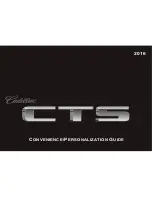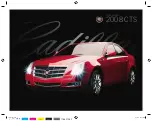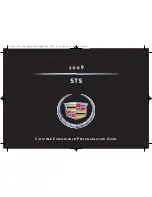
For more information on tire load rating
(
For information on calculating total and
cargo load capacities (
Unidirectional tires offer added
advantages, such as better hydroplaning
performance. To benefit, however, you must
make sure the tires rotate in the direction
specified.
An arrow on the sidewall indicates the
intended direction of rotation (spinning)
of the tire.
Regularly check the tires for damage.
Damaged tires can cause tire inflation
pressure loss. As a result, you could lose
control of your vehicle.
Worn, old tires can cause accidents. If the
tire tread is badly worn, or if the tires have
sustained damage, replace them.
Check the tire inflation pressure at least
once a month. For more information on
checking tire inflation pressure, see
“Recommended tire inflation pressure”
(
Tire inspection
Every time you check the tire inflation
pressure, you should also inspect your
tires for the following
R
R
cord or fabric showing through the tire’s
rubber
R
bumps, bulges, cuts, cracks or splits in
the tread or side of the tire
Replace the tire if you find any of the above
conditions.
Life of tire
Tires should be replaced after 6 years,
regardless of the remaining tread.
The service life of a tire is dependent upon
varying factors including but not limited
to
R
driving style
R
tire inflation pressure
R
distance driven
Tread depth
Although the applicable federal motor
vehicle safety laws consider a tire to be
worn when the treadwear indicators (TWI)
become visible at approximately
1
/
16
in
(1.6 mm), we recommend that you do not allow
your tires to wear down to that level. As
tread depth approaches
1
/
8
in (3 mm), the
adhesion properties on a wet road are
sharply reduced.
Depending upon the weather and/or road
surface (conditions), the tire traction
varies widely.
Do not allow your tires to wear down too far.
Adhesion properties on wet roads are
sharply reduced at tread depths of less
than
1
/
8
in (3 mm).
Treadwear indicators (TWI) are required by
law. These indicators are located in six
places on the tread circumference and
become visible at a tread depth of
approximately
1
/
16
in (1.6 mm), at which
point the tire is considered worn and
should be replaced.
Recommended minimum tire tread depth:
Summer tires
1
/
8
in (3 mm)
Winter tires
1
/
6
in (4 mm)
114
Tires and wheels
>> Operation.
Summary of Contents for fortwo cabriolet
Page 1: ...Operator s Manual smart fortwo coup and smart fortwo cabriolet...
Page 4: ......
Page 29: ...Safety Occupant safety 28 Panic alarm 43 Driving safety systems 44 Anti theft systems 47...
Page 50: ...48...
Page 96: ...94...
Page 138: ...136...
Page 180: ...Fuse box Front side Fuse y Backup fuse slots 178 Fuses Practical hints...
Page 184: ...182...
















































